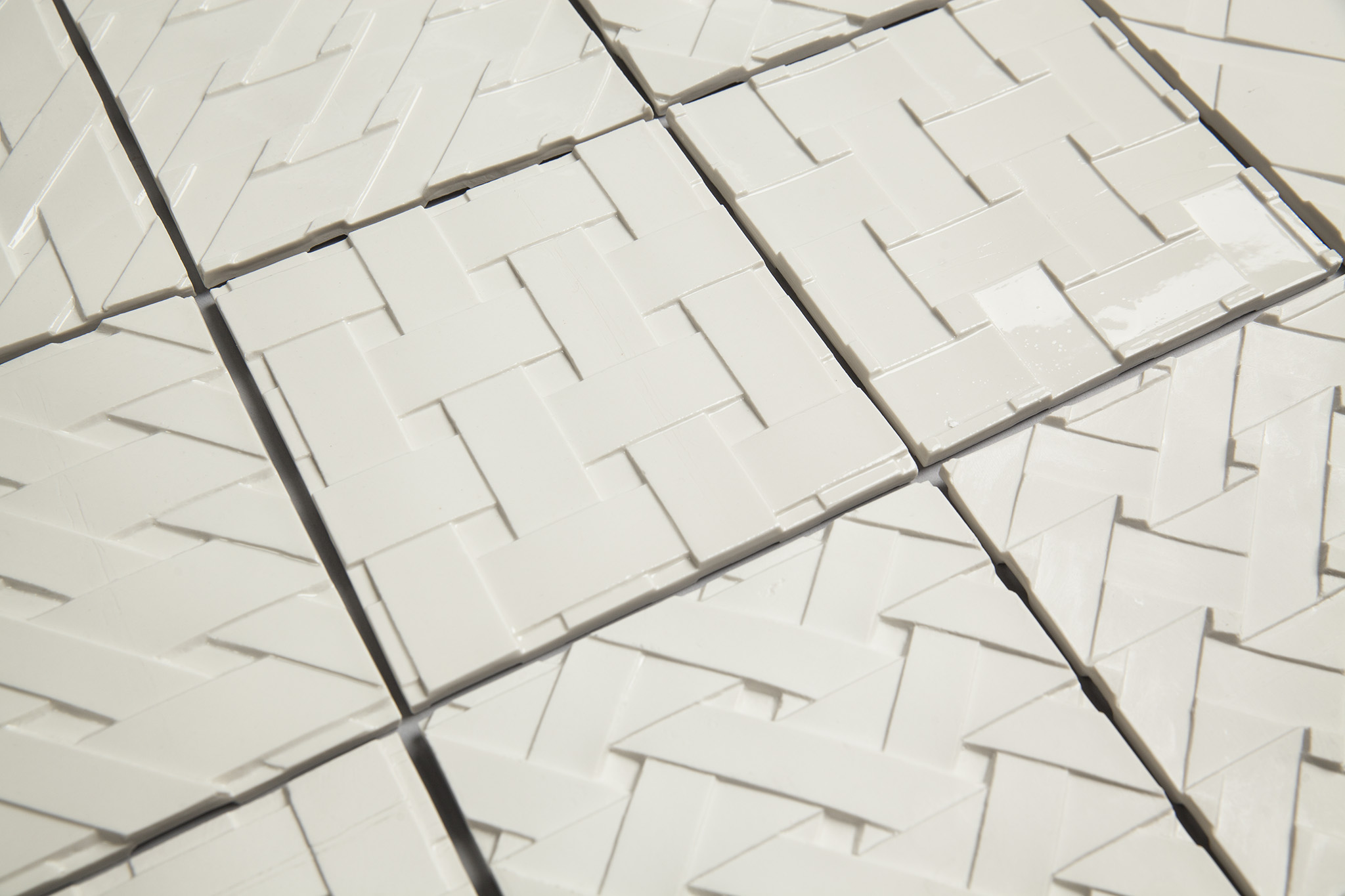Kutata
KUTATA ist eine Kollektion von vier Fliesen, die eine strukturierte Oberfläche besitzen. Jede Fliese hat zwei Seiten, wobei die eine das Positiv und die andere das Negativ eines Webmusters trägt. Eine Seite ist glasiert und somit glatt, die andere rau. Die Muster der vier Fliesen sind auf einem Raster aufgebaut, das es erlaubt, alle Fliesen, egal welches Muster, egal ob die Vorder- oder Rückseite gewählt wurde oder ob die Fliesen gedreht wurden, miteinander zu kombinieren. Dadurch entsteht eine enorme Bandbreite von Möglichkeiten, die Fliesen nach eigenem Geschmack zusammenzustellen.
Die Inspiration kam aus dem Interesse für Strukturen afrikanischer Handwerkskunst. Ich wollte traditionelle Handwerke neu interpretieren und abstrahiert darstellen. Über zahlreiche Experimente mit verschiedensten Materialien kam ich schließlich dazu gewebte Furnierstreifen in Ton abzudrücken. Diese abstrakte Darstellung eines einfachen Musters gefiel mir so gut, dass ich beschloss Fliesen daraus zu entwickeln. Den Strukturen wird durch die flache Anbringung an der Wand am besten Raum gegeben. Die Umsetzung, aber auch das Konzept des Projekts wurde immer komplexer, daher der Name KUTATA(suaheli für komplex/verwickeln).
KUTATA is a collection of four tiles which have a structured surface. Each tile has two sides, one carrying the positive and the other the negative of a woven pattern. One side is glazed and thus smooth, the other rough. The patterns of the four tiles are built on a grid, so that you can combine all tiles, it doesn’t matter which pattern and which side you choose or if you turn the tiles. This creates an enormous range of possibilities and ways to arrange your personal wall.
The inspiration came from the interest in structures of African craftsmanship. I wanted to reinterpret traditional crafts and present them abstractly. Through experiments with different materials I finally came to make imprints of woven veneer strips in clay. I liked this abstract representation of a simple pattern so much that I decided to develop tiles from it. The structure is shown the best by the flat attachment to the wall. The implementation, as well as the concept of the project became more complex, therefore I chose the name KUTATA (suaheli for complex / entangle).



